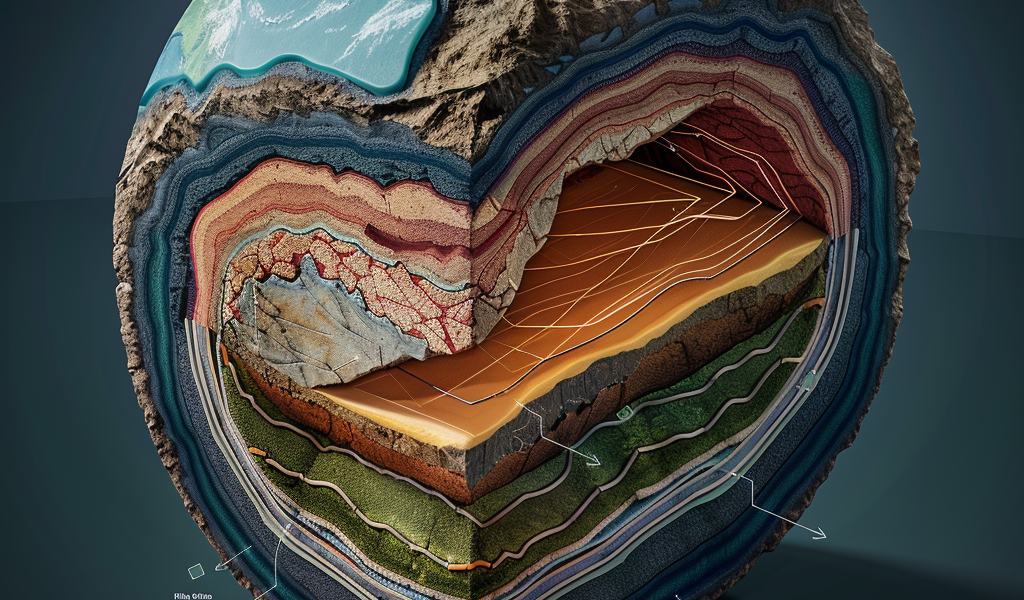Recent research by scientists from the University of Maryland has unveiled significant findings regarding an ancient seafloor that has been buried deep beneath the Pacific Ocean. This discovery is reshaping our understanding of the Earth’s interior and the geological processes that have taken place over millions of years.
Located in the East Pacific Rise, a tectonic plate boundary in the southeastern Pacific Ocean, the ancient seafloor reveals insights into the Earth’s mantle, the layer situated between the crust and the core. This groundbreaking study was led by Jingchuan Wang, a postdoctoral researcher in geology, and the findings were published in the journal Science Advances on September 27, 2024.
Utilizing advanced seismic imaging techniques, the research team was able to penetrate deep into the Earth’s mantle, identifying a notably thick area within the mantle transition zone. This zone, which lies between approximately 410 and 660 kilometers below the Earth’s surface, serves as a boundary separating the upper and lower mantles. The thickness of this area varies depending on temperature, and the team’s discovery could provide explanations for the unusual structure of the Pacific Large Low Shear Velocity Province (LLSVP), a vast region in the lower mantle.
According to Wang, “This thickened area is like a fossilized fingerprint of an ancient piece of seafloor that subducted into the Earth approximately 250 million years ago. It’s giving us a glimpse into Earth’s past that we’ve never had before.” This ancient seafloor is believed to have been a result of subduction, a geological process where one tectonic plate slides beneath another, recycling surface materials back into the mantle.
Subduction is often associated with observable geological phenomena such as volcanoes, earthquakes, and deep marine trenches. Traditionally, geologists have studied subduction by analyzing rock samples and sediments found at the surface. However, Wang, along with Geology Professor Vedran Lekic and Associate Professor Nicholas Schmerr, took a different approach. They employed seismic waves to investigate the ocean floor.
By examining the travel patterns of seismic waves through various layers of Earth, the researchers created detailed mappings of the structures hidden deep within the mantle. This innovative method can be likened to a CT scan, which allows for a comprehensive view of internal structures without the need for invasive techniques.
The implications of this discovery extend beyond just understanding the ancient seafloor. It also raises questions about the dynamics of the Earth’s mantle and how the processes of subduction and recycling of materials have influenced the planet’s geological history. The presence of this ancient slab may help scientists unravel the complexities of the LLSVP, which appears to be disrupted by the subducted material.
This research not only enhances our knowledge of the Earth’s interior but also emphasizes the importance of innovative technologies in geological studies. The ability to visualize and analyze deep Earth structures opens new avenues for understanding the planet’s evolution and the forces that shape its surface.
As researchers continue to explore the depths of the Earth, findings like these play a crucial role in piecing together the intricate puzzle of our planet’s history. The ancient seafloor discovered by the University of Maryland team serves as a testament to the dynamic processes that have occurred over geological time scales, providing a clearer picture of the Earth’s inner workings.
In summary, the University of Maryland’s groundbreaking discovery of an ancient subduction zone beneath the Pacific Ocean not only challenges existing theories about Earth’s interior structure but also highlights the potential for seismic imaging techniques to reveal previously hidden geological features. As scientists delve deeper into the mysteries of the Earth, each finding contributes to a more comprehensive understanding of the planet’s evolution and the complex interactions that shape its geology.





